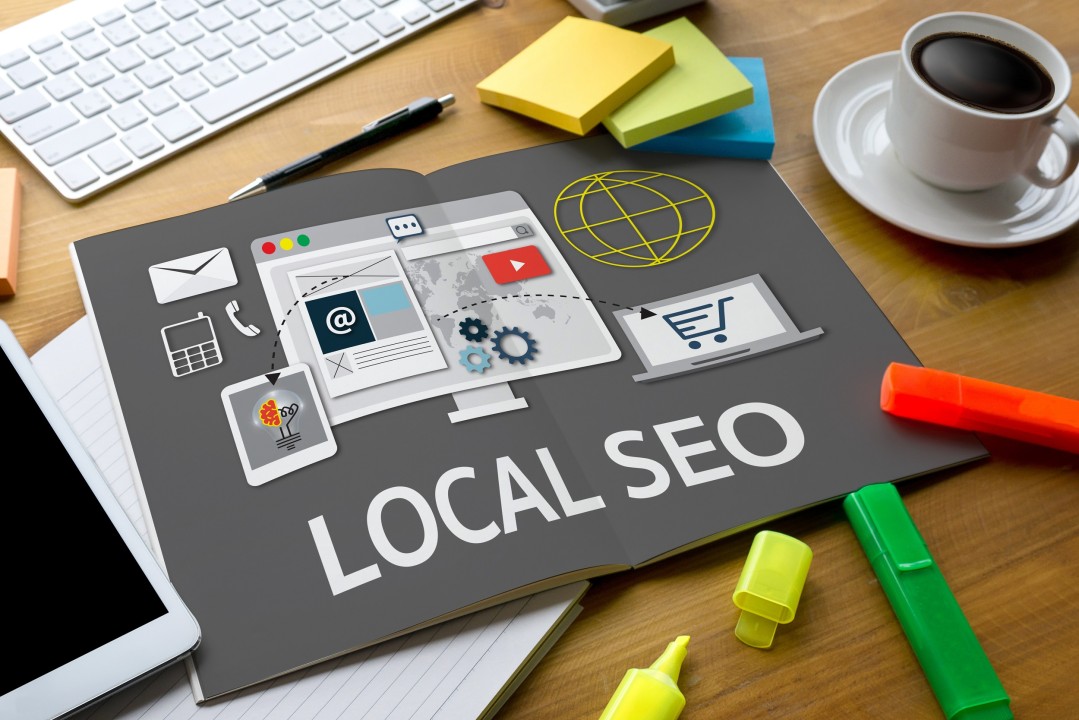Optimizing your website for local SEO is crucial to attracting customers and improving local search rankings. Local SEO aims to ensure that people in your area can easily find your business when searching for the products or services you offer. A complete guide to optimizing your website for local SEO:
1. Claim and Optimize Your Google My Business Profile
Google My Business (GMB) is a powerful tool for local SEO. To optimize your profile:
- Claim Your Business: Ensure you have claimed your business listing on GMB.
- Complete All Information: Fill out all the fields, including business name, address, phone number, website, and business hours.
- Add High-Quality Photos: Upload professional images of your business, products, and services.
- Use Keywords: Incorporate relevant keywords in your business description.
- Collect Reviews: Encourage satisfied customers to leave positive reviews and respond to them promptly.
2. Ensure NAP Consistency
NAP stands for Name, Address, and Phone number. Consistency across the web is crucial:
- Accurate Listings: Make sure your NAP information is accurate and consistent across your website, GMB profile, and all online directories.
- Use Structured Data: Implement local business schema markup to help search engines understand your NAP information better.
3. Optimize Your Website Content
Localize your website content to attract local customers:
- Local Keywords: Integrate local keywords naturally into your website’s content, meta tags, and headings. For example, use “best pizza in [your city]” rather than just “best pizza.”
- Location Pages: Create separate pages for each location if you have multiple branches. Include unique content, NAP information, and directions for each location.
- Local Content: Write blog posts about local events, news, or activities that relate to your business. This helps attract local traffic and signals to search engines that you are a local authority.
4. Create and Optimize Local Listings
Ensure your business is listed on local directories and review sites:
- Local Directories: Submit your business information to local directories such as Yelp, Yellow Pages, and TripAdvisor.
- Industry-Specific Directories: If applicable, list your business in industry-specific directories.
- Consistent Information: Ensure that your NAP information is consistent across all listings.
5. Get Local Backlinks
Backlinks from local websites can boost your local SEO:
- Local Sponsorships and Partnerships: Sponsor local events or partner with local organizations and get links back to your site.
- Local Press Coverage: Reach out to local media outlets to cover news about your business.
- Engage with Local Bloggers: Collaborate with local bloggers and influencers for reviews or features.
6. Optimize for Mobile
A significant portion of local searches comes from mobile devices:
- Responsive Design: Ensure your website is mobile-friendly and adapts to different screen sizes.
- Fast Load Times: Optimize images and reduce server response times to improve page speed.
- Click-to-Call Buttons: Make it easy for mobile users to contact you by including click-to-call buttons on your website.
7. Use Location-Based Keywords in Meta Tags
Optimize your meta titles, descriptions, and headers with local keywords:
- Meta Titles: Include your city or region in your page titles. For example, “Best Plumber in [City Name] | [Business Name].”
- Meta Descriptions: Write compelling descriptions that include local keywords and a call to action.
- Headers (H1, H2, etc.): Use local keywords in your headers to help search engines understand the geographical relevance of your content.
8. Encourage and Manage Online Reviews
Positive reviews can improve your local SEO and attract more customers:
- Ask for Reviews: Request satisfied customers to leave reviews on Google, Yelp, and other review platforms.
- Respond to Reviews: Show that you value customer feedback by responding to reviews, both positive and negative.
- Showcase Reviews: Display positive reviews on your website and social media profiles.
9. Optimize for Voice Search
Voice search is growing, and optimizing for it can help you capture more local traffic:
- Natural Language: Use natural, conversational language in your content that mimics how people speak.
- FAQs: Include a Frequently Asked Questions (FAQ) section to answer common voice search queries.
- Long-Tail Keywords: Focus on long-tail keywords that are more likely to be used in voice searches.
10. Monitor and Analyze Your Local SEO Performance
Regularly check your local SEO performance to make data-driven improvements:
- Google Analytics: Use Google Analytics to track your website’s traffic and see how users find you.
- Google Search Console: Monitor your search performance and identify any issues that need fixing.
- Local SEO Tools: Use tools like Moz Local, BrightLocal, and Yext to manage and track your local SEO efforts.
Conclusion
Optimizing your website’s local SEO is crucial to attracting and retaining customers in your area. By following these best practices, you can improve your local search results, promote your website, and drive more traffic to your business. Local SEO is an ongoing process. Keep your knowledge up to date, engage with your community, and stay up to date on the latest trends.
